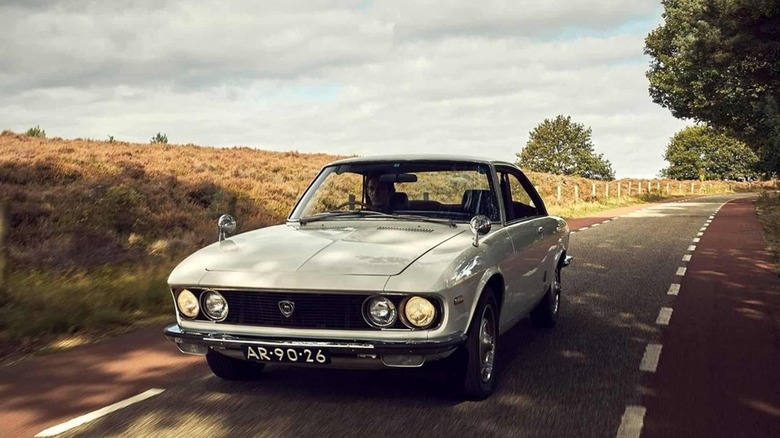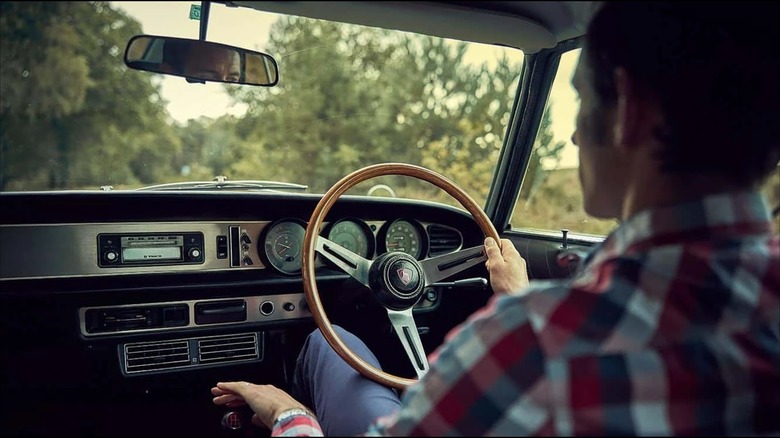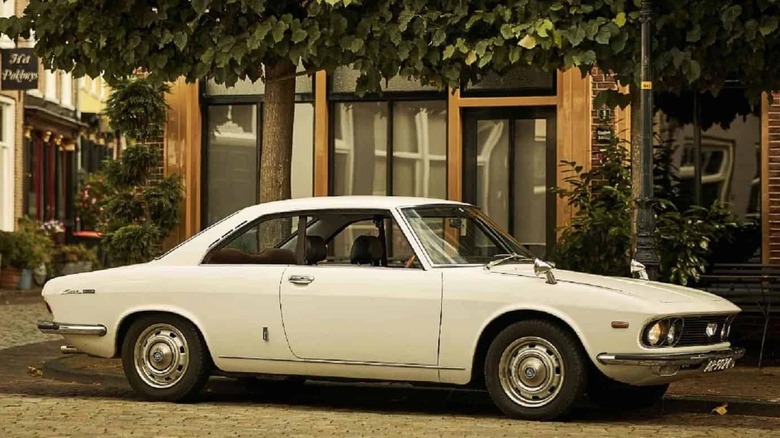Everything To Know About The Mazda Luce Rotary Coupe
It's difficult to imagine that a company that started out as a cork manufacturer in 1920, would today be a successful automaker on a global level. According to Statista, Mazda sold around 407,000 automobiles in the U.S. during 2023. But how did the automaker with such humble beginnings come to such prominence in the auto industry? One key to Mazda's rise is attributed to their eye-catching passenger car, the Luce, first released in 1966.
The look of the Luce was heavily influenced by a renowned Italian design company, Gruppo Bertone, along with the involvement of the talented Giorgetto Giugiaro, giving it a European elegance. However, even more exciting, the Luce Rotary Coupe debuted in 1969 and added a sportier body, new engine, and a hefty price tag. This vehicle is praised for its dramatic design and unique automotive technology that were unlike anything else during that era. However, this luxurious Mazda was just one of the best cars ever built with rotary engines.
Bertone and Giorgetto Giugiaro design come with a price
Giovanni Bertone, based out of Turin, Italy, and founder of Gruppo Bertone, made a name for himself crafting carriages in the early 20th century. Once the public became fascinated with automobiles, Bertone shifted his focus and began producing groundbreaking vehicle designs that achieved international fame.
Giorgetto Giugiaro, an esteemed figure in automotive design and who was inducted into the Automotive Hall of Fame in 2002, had a hand in bringing the Luce into fruition. Guigiaro's other accomplishments include design work with Lamborghini, Maserati, Lotus, and Bugatti.
Mazda utilized a Bertone prototype as inspiration along with Guigiaro's input, and crafted a luxury sedan that included Mazda's own Japanese spin. The Luce Rotary Coupe featured amenities like a wooden steering wheel, sophisticated dashboard, bucket seats, air conditioning, no side pillars for better visibility, and a spacious interior.
What did Italian automotive styling and Japanese luxury cost in 1969? The Luce Rotary Coupe cost anywhere from 1.45 to 1.75 million yen, according to Mazda, which is between $9,271 and $11,189. Adjusted for inflation, this luxury coupe today would cost upwards of $95,000.
The rotary engine and performance output
Since the late 19th century, internal combustion engines generated power with pistons moving up and down within a cylinder chamber. Inventor Felix Wankel pioneered a new design that didn't rely on any of the previous engine iterations. "[The Wankel engine] was the first working engine design that did not use pistons, valves, and cylinders, but a tiny triangle spinning inside a housing to make power." The rotary engine still generates combustion but feels different behind the wheel. For example, the ride is much smoother in the Luce Rotary Coupe because it isn't affected by the typical vertical motion of the pistons creating vibration with its twin-rotor engine.
The twin-rotor engine of the Luce Rotary Coupe was small at only around 2.0L, but offered impressive output at 126 horsepower. Mazda opted for a front-wheel configuration, which isn't nearly as sporty feeling, but handles well and promotes a refined approach to driving rather than an overly aggressive one.
In terms of top speed, this classic Mazda coupe could achieve 118 mph, with a 0 to 60 time of 10.3 seconds (Luce Rotary Coupe Deluxe). This classic and rare coupe wasn't the only shining example of the automakers work. It's just one of the best Mazda cars of all time.


